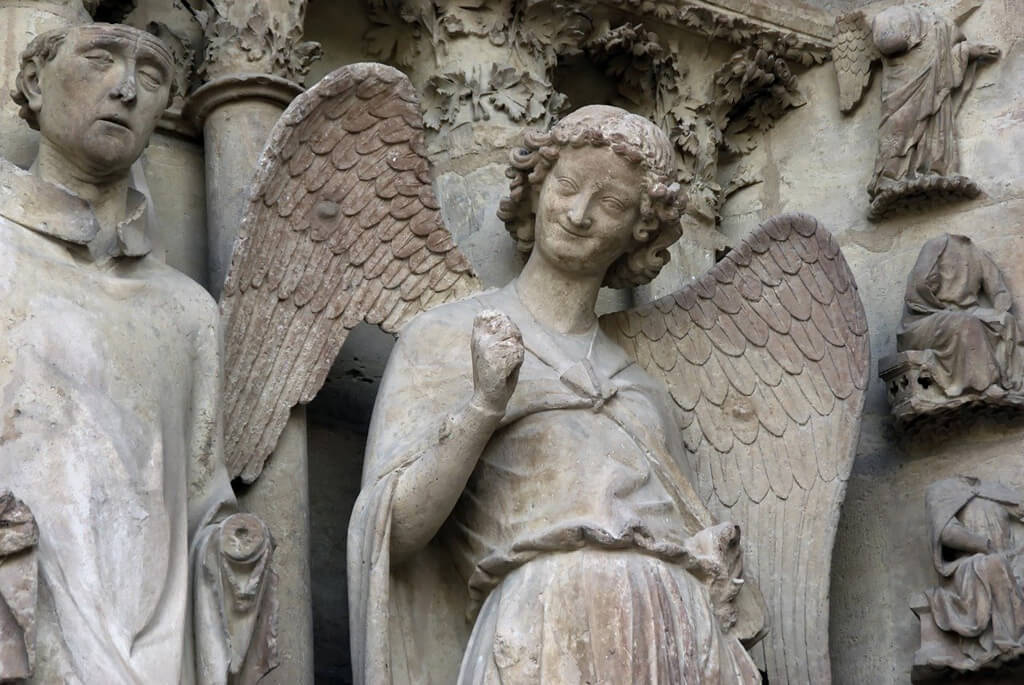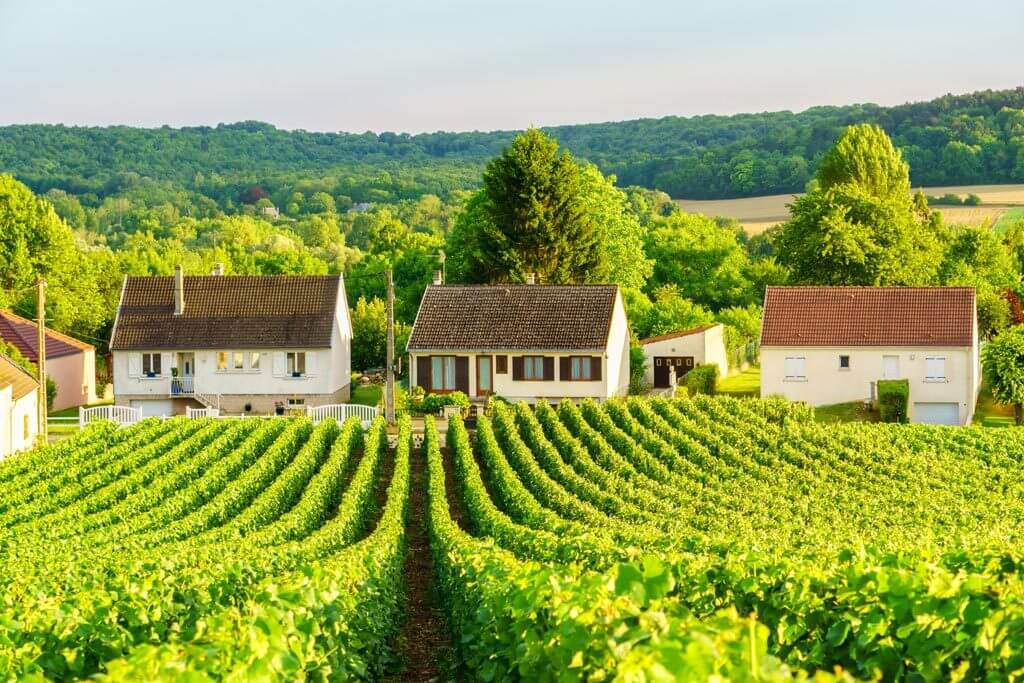Article written by Elisa - Travel Writer & Local in France
This article may contain compensated links. Please read disclaimer for more info.
One of the most famous French drinks, champagne is synonymous with celebration, and popping a bottle of champagne wine during the Christmas dinner or New Year’s is one of the main Christmas traditions in France.
The word ‘champagne’ is the second most used French word across the globe, and it is the symbol of party and celebration par excellence. Previously reserved for a certain elite, the champagne wine is foamed today in all kinds of situations, from the celebration of success to a fiesta in Saint Tropez.
So before you drink another glass of champagne, here’s all about the champagne – history and some fun champagne facts that you probably didn’t know yet.

Champagne History
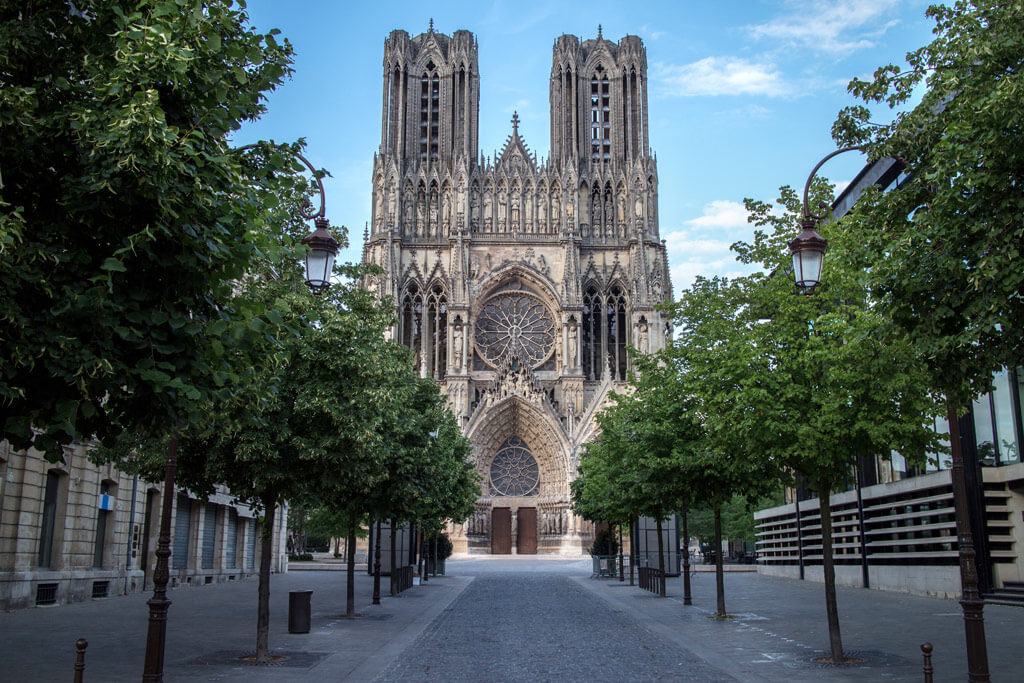
The history of champagne wine is long and fascinating. The presence of vineyards in the Champagne region dates back to Roman times or even earlier.
In 496 AD, Clovis, the king of the Franks, was baptized in Reims, the cradle of champagne wine. From then on, French kings were traditionally anointed in Reims, and champagne (the drink) was served as part of coronation festivities. This tradition marks the origin of champagne wine as a festive drink, tasted mainly by a privileged minority.
Although their champagne had little to do with the one we buy for New Year’s Eve, theirs would’ve rather been cloudy, still red known as ‘grey wine.’
Just like in other wine regions in France, it is the monks who contributed a lot to the work of the land and the elaboration (and perfection) of champagne wine in the Champagne region. We all know about Dom Pérignon (1638-1715), that monk in the abbey of Hautvillers, near Épernay, to whom we attribute the famous champenoise method that converts a vin tranquille (wine without bubbles) into sparkling wine.
Other champagne-related names worth remembering are Frère Oudart (1654-1742) – who widely contributed to master this technique and improve the quality of wine, and Dom Ruinart (1657-1709), a native of the Champagne region, who settled in Paris and promoted the champagne wine amongst the biggest names in the city and in the Palace of Versailles.
Champagne’s relationship with luxury was further exacerbated when the most opulent monarch of all, King Louis XIV, tasted champagne for the first time in the Reims Cathedral. It was King Louis XIV who associated champagne with his other obsessions: fashion, prestige, and luxury.
With the French Revolution of 1789, the guillotine started to fall, ending the association of champagne with monarchs and aristocrats. However, it was the revolution that launched the third, and perhaps the most powerful mythification cycle of champagne by intimately linking champagne to the ‘soul’ and virtues of the new French Republic.
Under the Empire, champagne’s glorious destiny was truly fulfilled. Napoleon used it to establish a new bourgeois, industrious and loyal society.
‘I can’t live without champagne, if I win, I deserve it; in case of loss, I need it’ – Napoleon Bonaparte
Jean-Rémy Moët established champagne Moët in the United States, developing a new clientele, including President George Washington. And when the Russian army routed Napoleon and reached the city of Reims, the enterprising Madame ‘Veuve’ Clicquot opened her champagne cellars to the victors in the hope that it would help her conquer the Russian market.
At the dawn of the first industrial revolution, champagne wine got faster access to different markets. Thanks to efficient rail networks, champagne could be transported further, in greater quantities, and to more places than ever before. The new equipment allowed more efficient production and made champagne more attractive, both from a taste and aesthetic point of view. Champagne quickly established itself as a symbol of France in the world’s eyes.
The champagne wine experienced a worldwide boom at the beginning of the 19th century thanks to the Germans. At the time, French prosperity seduced the Germans who came to settle en masse in the region. Over the years, some were linked to champagne properties through marriage, and others were associated with certain champagne houses. This explains why we find many German names on the champagne labels: Bollinger, Krug, or Deutz.
All about the Champagne Wine
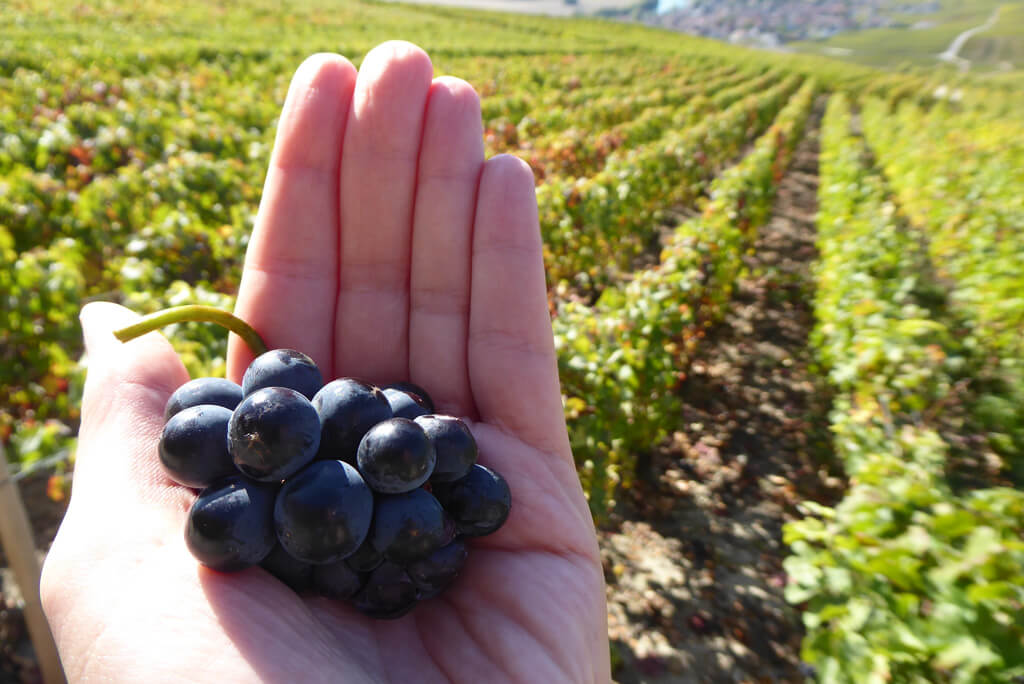
Champagne is actually a type of wine. The main grape varieties in the Champagne region are the chardonnay for the whites and the pinot-noir or pinot meunier for the reds.
A bottle of champagne has around 49 million bubbles! The characteristic bubbles that grace all champagnes are formed during a second fermentation process, because of the addition of sugar and yeast. The two ingredients react to form carbon dioxide and this creates millions of bubbles trapped in a very small space.
The only difference between sparkling wine and champagne is the region it comes from. Authentic champagne wine can only come from the Champagne wine region of France. Any bubbly from other parts of the world simply has to settle for the title of ‘sparkling wine.’
The Champagne vineyard is spread over five French departments: Aisne, Aube, Marne, Haute Marne, and Seine-et-Marne (the latest part of current Ile-de-France), with limestone and marl soils. The climate is oceanic with continental influences.
The Champagne region is one of the northernmost vineyards in France. As a result, it has always been subject to violent climatic conditions – waves of frost, hail, and epidemics of all kinds. These hazards have forced the winegrowers to adopt certain methods that would be considered dubious in other French wine regions: if there is a wine in France where ‘anything goes,’ it is the champagne wine.
Blend several wines from different vintages, mix white wine with red wine to obtain a rosé wine, add sugar to a cuvée to improve the taste, look for the standardization of a taste or a style to please the greatest number of people is also part of the history of champagne. But the world loves it, so it works!
Champagne’s denominations are champagne (blanc or rosé), 43 champagne Premier Crus, and 17 champagne Grands Crus which are Ambonnay, Avize, Aÿ, Beaumont-sur-Vesle, Bouzy, Chouilly, Cramant, Louvois, Mailly-en-Champagne, le Mesnil-sur-Oger, Oger, Oiry, Puisieulx, Sillery, Tours-sur-Marne, Verzenay,Verzy.
Champagne wines have categories too, depending on the sugar levels: extra brut (0-6 g/l of sugar), brut nature, brut, extra dry, sec, demi-sec, doux (more than 50g/l).
Best Champagne Brands
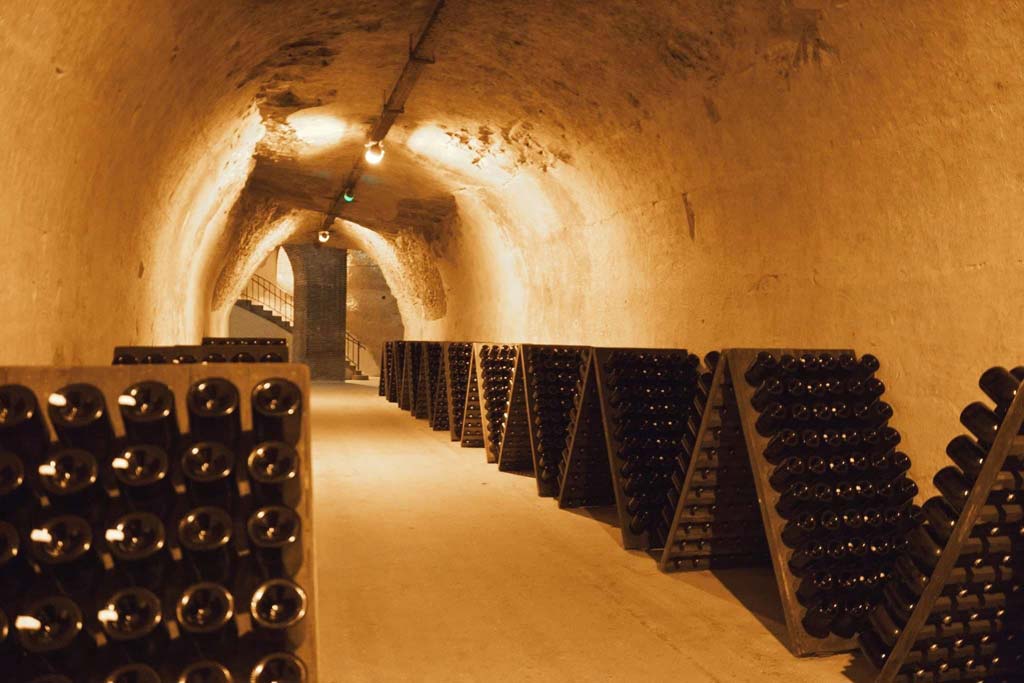
TIP: If you plan to bring a few bottles home during your trip to France (who could resist?!), make sure you pack your wine properly so it arrives safely home!
Here’s the list of best champagne brands (most popular champagne brands) based on the volume of sales:
- Moët & Chandon (LVMH) : 32 M bottles
- Veuve Clicquot (LVMH) : 16 M bottles
- Nicolas Feuillatte* : 9 M bottles
- Mumm (Pernod-Ricard) : 7,8 M bottles
- Laurent Perrier : 7,4 M bottles
- Piper-Heidsieck (EPI) : 5 M bottles
- Pommery (Vranken-Pommery Monopole) : 5 M bottles
- Lanson (Lanson-BCC) : 4,5 M bottles
- Mercier (LVMH) : 4,3 M bottles
- Taittinger: 4,2 M bottles
But, marketing & sales apart, what is the best champagne?
Here, any wine connoisseur or specialized magazine has a different list of best champagnes. Here’s an example of a list of best champagnes by Le Guide Hachette des Vins (a French wine buying guide):
- CHARLES HEIDSIECK Blanc de blancs Blanc des millénaires 2006 Champagne
- CHARLES LEPRINCE 2006 Champagne
- MOËT ET CHANDON Brut Impérial Champagne
- BONNAIRE Blanc de blancs Ver sacrum Champagne
- SOUTIRAN Collection Privée • Gd cru Champagne
- ALFRED GRATIEN 2004 Champagne
- DELAMOTTE Blanc de blancs 2008 Champagne
- GOSSET Grande Réserve Champagne
- TAITTINGER Blanc de blancs Comtes de Champagne 2006 Champagne
- VEUVE CLICQUOT La Grande Dame 2008 Champagne
- KRUG Grande cuvée 168e édition Champagne
- POL ROGER Sir Winston Churchill 2000 Champagne • Champagne
Fun Facts about Champagne
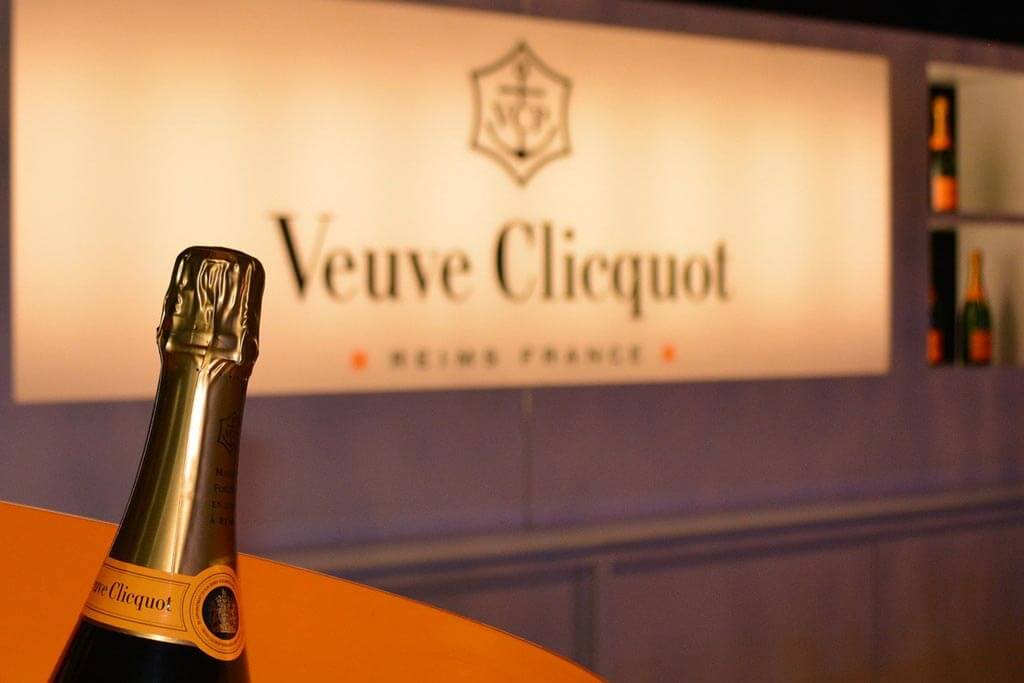
Here’s the list of the most interesting and fun facts about champagne you likely never knew.
The Champagne wine region produces about 300 million bottles of champagne each year.
Over 250 kilometers (155 miles) of champagne cellars lie beneath Reims, the capital of the Champagne region, holding around 200 million bottles.
In Épernay, the Avenue de Champagne is one of the most expensive streets in the entire world because of the millions of bottles of champagne stored in the cellars beneath it.
The impressive chalk cellars that champagne Duperrey bottles are aged in are actually recognized by UNESCO as a World Heritage Site.
France has the largest champagne market (of course!). The French consume 162.5 million bottles every year, or about 52 percent of the entire world production of champagne. France is followed by Belgium, Switzerland, and the UK.
33% of all champagne sales are made in November and December.
A 7500ml bottle of champagne contains about 49 million bubbles. A standard-sized glass emits 30 bubbles every second.
The pressure in a champagne bottle is about three times the pressure of car tires.
When popped, a champagne cork can reach a velocity of 40 km per hour.
Without control of the cork, you risk injuring yourself. It is indeed one of the most common domestic accidents in France!
The first glass of champagne has the most bubbles, meaning the first glass will also get you feeling drunk the fastest. Every glass thereafter poured from that bottle will be more potent than the one that follows.
For a long time, champagne was seen as dangerous because bottles had a tendency to explode – hence its nickname ‘Devil’s wine’. In the 19th century, champagne makers wore metal masts to protect their faces when handling bottles. Eventually, stronger glass bottles and metal clasp closures made the stuff more stable.
If you’re drinking good champagne, you’ll be able to see the ‘collerette.’ This refers to the bubble trains traveling up the sides of the glass.
Your champagne will stay more bubbly in a flute glass compared to a coupe glass.
Before modern-day flutes, the ‘coupe’ was the go-to glass for champagne, and this was rumored to have been molded from Marie-Antoinette’s left breast.
One of the weirdest usages for champagne? During the 19th century, high society used it to polish their boots!
Given its location in the northeast of France, the Champagne region was in the direct path of advancing Germans during the World Wars. Instead of fleeing, many locals sought refuge beneath the towns in the tunnel cellars dug by the Romans, taking rare bottles of champagne with them.
Winston Churchill was one of the biggest Champagne drinkers on record. Between 1908 and 1965, he drank an estimated 42,000 bottles. Pol Roger even made him a special one-pint bottle that was served to him every day at precisely 11 am.
‘Remember gentlemen, it’s not just France we are fighting for, it’s Champagne!’ – Winston Churchill
Marilyn Monroe took a bath in champagne. It took 350 bottles to fill up the tub.

